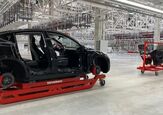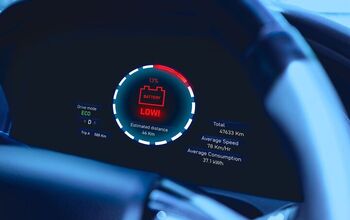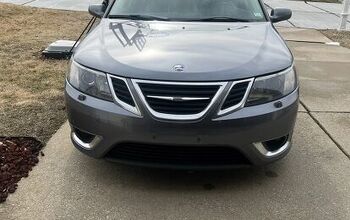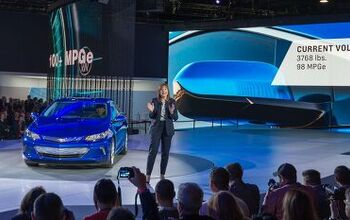Houston Prof. Manipulated Study to Make Red Light Cameras Appear Safer
Houston Mayor Bill White selected Urban Politics Professor Robert Stein of Rice University to create a report on the engineering safety performance of the city’s first fifty automated ticketing machines. (Professor Stein’s wife, Marty, is employed by the city of Houston as a top aide to the mayor.) In a November 2007 email, White emphasized his personal interest in the subject at the beginning of the project. “Let’s just make sure that we study things that really matter for decision-making,” Mayor White wrote to Professor Stein. “Our funds for public policy research are scarce. . . . I am not suggesting that somebody alter one’s conclusions and I am not trying to influence the conclusions. What I am trying to do is give some helpful advice from a decision-maker concerning how to avoid analytical overkill.” The point was not lost on Stein whose employer received $50k for the red light camera study and who depended (depends?) on the city for funding of several other projects.
By the beginning of 2008, Stein worried that the data he compiled were not favorable to the city. He let officials know that this should be expected.
“Recall our own findings match what is reported in [this Tampa Tribune] article and in the public health study cited in the article,” Stein wrote in a March 14 email to Houston Police Sergeant Michael Muench. “Tim and I have reviewed ten years’ worth of studies on red light camera programs and the tentative evidence that those studies using the weakest designs are most likely to report a reduction in side impact collisions after the installation of red light cameras. More rigorous and appropriate research designs (like the one we use for the Houston program) fail to detect this reduction after the installation of red light cameras.”
In light of this, Houston police began to push Stein to weaken his design to match techniques used in studies conducted by insurance industry researchers and others with an interest in promoting the use of photo enforcement. In an April 29 meeting with police, Stein agreed to reconsider his results.
“Dr. Stein’s analysis of the original 20 intersections from Sept–Dec 2006 found 169 accidents,” Houston Police Lieutenant Jonathan Zera wrote. “However, HPD countered that the findings were flawed because: 1. All accidents within 500′ of the intersection were being counted. 2. All accidents within the intersection were being counted even if neither vehicle’s approach to the intersection was regulated by a red light camera. As such, Dr. Stein will re-analyze the 169 accidents.”
Realizing that an early copy of Stein’s work would be critical in understanding the truth about Houston’s red light camera program, a pair of attorneys made a request for a copy of the report’s first draft. When the city rejected the request, Randall L. Kallinen and Paul Kubosh filed a lawsuit forcing disclosure of the correspondence between Stein and the city. After reviewing the documents, Kallinen gave Professor Stein partial credit for his work.
“While Stein at first seemed to have leaned toward the police he rejected most of their attempts to change his report,” Kallinen told TheNewspaper. “He did however mislead the public through the report and to the press when he said accidents were increasing citywide when he knew for a fact they were decreasing citywide.”
Stein’s published report on the Houston program documented an increase in accidents at intersections that had red light cameras, but the greatest increase happened in the directions where the camera was not looking. Stein offered to explain this anomaly by creating the hypothesis that these “non-monitored” approaches were equivalent to intersection locations that had no red light cameras at all. This hypothesis—despite the negative data–allowed Stein to conclude that the cameras proved useful in reversing a general trend toward increased accidents throughout the city.
“Why have accidents at non-monitored approaches increased so dramatically in the past year?” Stein asked in his December report. “As suggested above, these results could be evidence of an increase in collisions across the city. . . . Using this methodology, the new analysis could reveal if, in fact, the red light cameras mitigated a general increase in accidents citywide. This observation, if found, would both confirm the public safety benefit of the red light cameras in Houston as well as advocate the expansion of the program.”
The problem with this theory was that there was no increase in collisions across the city—and Stein knew it before his report was published. Houston police documents show that accidents steadily dropped each year from 2004 to 2008. There were 81,238 accidents in 2004 and 67,405 in 2007–a 17 percent decrease.
“Wow, this is perfect, thanks so much,” Stein wrote in response to a November 13 email from a Houston officer containing a complete set of declining accident figures.
Several local media at the time painted a positive image for the red light camera program by widely reporting Stein’s citywide accident theory.
More by The Newspaper
Latest Car Reviews
Read moreLatest Product Reviews
Read moreRecent Comments
- Luke42 When will they release a Gladiator 4xe?I don’t care what color it is, but I do care about being able to plug it in.
- Bd2 As I have posited here numerous times; the Hyundai Pony Coupe of 1974 was the most influential sports and, later on, supercar template. This Toyota is a prime example of Hyundai's primal influence upon the design industry. Just look at the years, 1976 > 1974, so the numbers bear Hyundai out and this Toyota is the copy.
- MaintenanceCosts Two of my four cars currently have tires that have remaining tread life but 2017 date codes. Time for a tire-stravaganza pretty soon.
- Lorenzo I'd actually buy another Ford, if they'd bring back the butternut-squash color. Well, they actually called it sea foam green, but some cars had more green than others, and my 1968 Mercury Montego MX was one of the more-yellow, less-green models. The police always wrote 'yellow' on the ticket.
- ToolGuy Some of my first cars were die-cast from pot-metal in 2 pieces: body-in-white plus chassis. I spray-painted some of them, the masking was a pain. The tires did burn realistically.


































Comments
Join the conversation
Evan, the point is that synchronizing lights to save 2 mpg, even if it worked, which it doesn't, is kind of stupid when we already have technologies that can just turn your engine off while you're at the red light. There's no magic synchronization fairy that will eliminate enough red lights to make much difference anyways.
This is true, although it will take some time for such technology to become ubiquitous. I, for instance, am a college student with no job and little money, so I'll be keeping my old first-gen Intrepid 'til the wheels fall off, and Lord knows what kind of mileage that thing's getting. At any rate, I can't even remember the last time I drove in an urban environment, so I guess red lights aren't too much of a hassle for me. (small town Iowa FTW!)